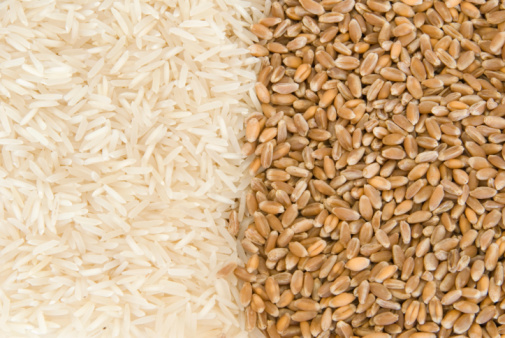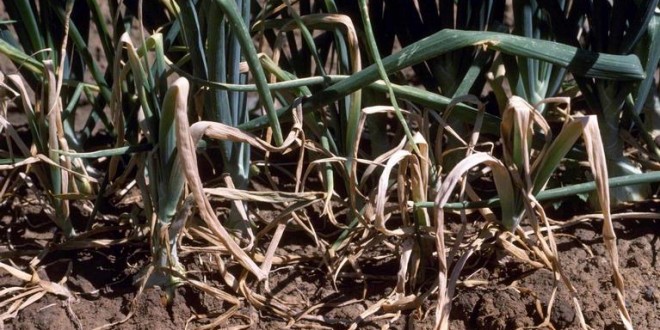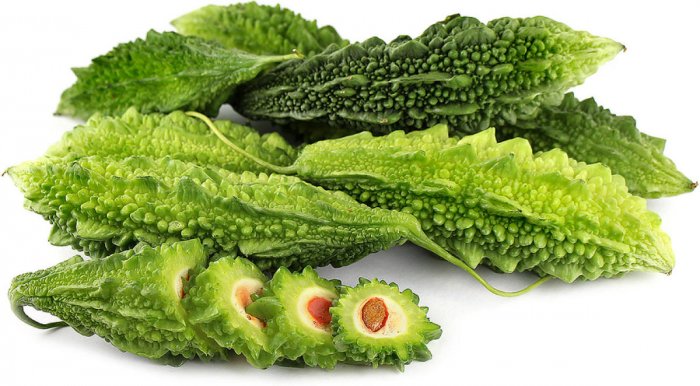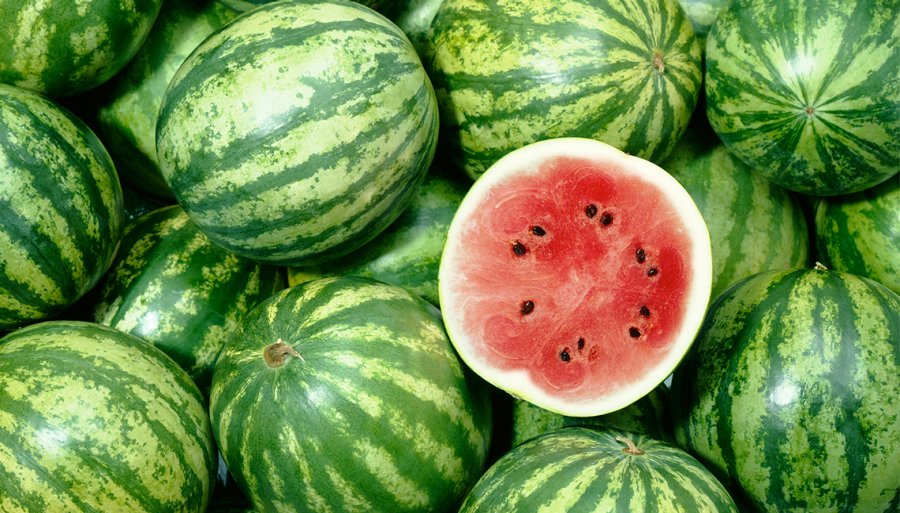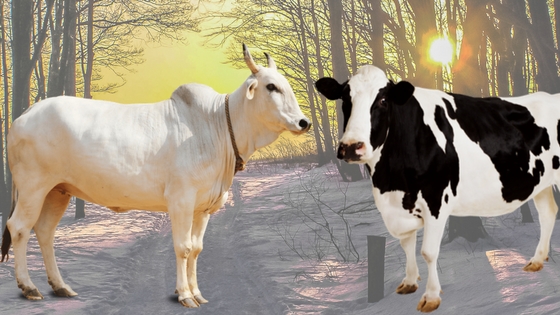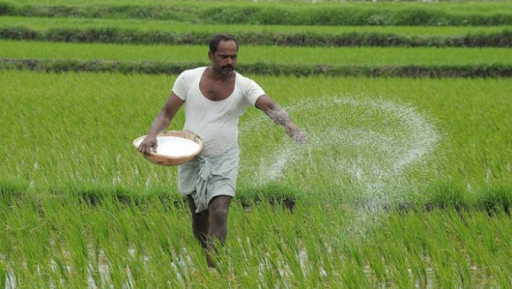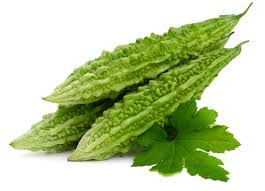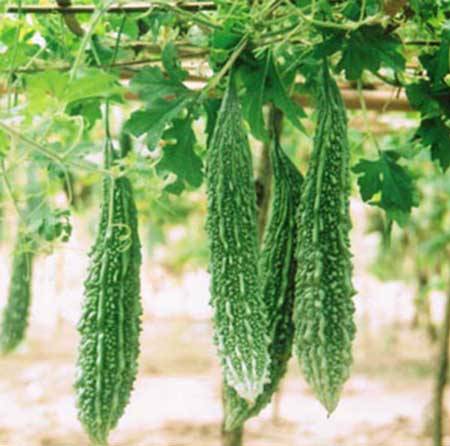- The government has taken some major steps to deal with this difficult phase of the Corona World Pandemic
- It has been decided in the Central Cabinet meeting chaired by the Prime Minister to give food grains to 80 crore people of the country at a cheaper rate.
- The government has decided to give Rs 27 per kg Wheat at just Rs 2 per kg and Rs 37 per kg Rice at Rs 3 per kg to 80 crore people.
- 1 lakh 80 thousand crore will be spent on this, which has been given in advance to the states for three months.
How to manage thrips in onion crop?
It is a small insect which causes the most damage to the onion crop. Both its infant and adults suck the juice by hiding it in the cheekbones of the leaves. This forms yellow-white spots on the leaves, and in the later stages, the leaves shrink. This insect is yellow in their initial stages which turns dark brown later. Its lifespan is of 8–10 days. Adults live in a dormant state on an onion field, on the grass and other plants. In winter, thrips go into tubers and act as a source of infection the next year. These pests appear in large numbers on onion tubers during March-April. They suck the juice from leaves which makes them spiral and limits the plant’s growth. Sometimes their infestation remains on the tubers even during the storage.
Preventive measures –
-For control of thrips in onion, deep ploughing should be done in summer.
-Do not use nitrogen fertilizer in excess.
–Spray Profenophos 50 E.C. @ 45 ml or lambda-cyhalothrin 4.9% c.s. @ 20 ml or spinosed @ 10 ml or fipronil 5 s.c. with 15 litres of water per acre.
ShareBenefits of consuming Bitter Gourd
- Phosphorus is found in sufficient quantity in Bitter Gourd. It removes phlegm, constipation and digestive problems and makes the digestive system strong.
- It is good to consume bitter gourd juice when there is gas and indigestion in the stomach.
- Drinking bitter gourd juice strengthens the liver and eliminates all liver problems and also provides benefits in jaundice.
- It does not allow harmful fats to accumulate in the arteries of the heart, thereby maintaining blood circulation.
- It has two compounds called momersidine and charatin which control blood sugar.
- It contains beta-carotene which keeps away eye related diseases and also helps in increasing light.
Watermelon is very beneficial in summer season
- Watermelon contains 92% water, which keeps the body cool, fresh and hydrated.
- Its consumption also protects us from hot air (Loo) in summer.
- Watermelon contains antioxidants that strengthen the immune system. It also reduces calories which controls obesity.
- Vitamin C is found in plenty in watermelon, which helps in the formation of the upper skin of the body and care, and vitamin C increases the body’s ability to fight against diseases.
- Its intake helps to balance blood pressure.
How to take special care of animals in the summer season
- Animals are also stressed due to hot weather in summers.
- Due to high temperature, the quantity of the animal’s diet reduces and thus their behaviour starts changing.
- Some animals can even die due to heatstroke when exposed to high temperatures for a long duration.
- To prevent this, don’t keep the animals in direct sunlight for a long duration, and keep giving them water regularly.
- Maintain proper humidity and coolness in the Cattle fence/shade.
- To protect pregnant animals from milk fever, feed them with 50-60 grams of the mineral mixture every day.
21-day lockdown: Government has given special exemption to farmers
At this time, the whole world is troubled by the increasing cases of the coronavirus. In India also, the central government has imposed a 21-day nationwide lockdown amid growing infection of the virus. This means that all offices, markets, means of transport etc. will be closed in the entire country for 21 days. This news created a situation of confusion among Indian farmers. But the government has ended this confusion by giving special exemption for the farmers even in the lockdown.
Actually, the farmers have to purchase many agricultural products like fertilizer and seeds for their crops. In such a situation, if they wouldn’t have got these products due to lockdown, then they would have to face a lot of trouble. Keeping in mind these problems of the farmers, the government has announced a discount for farmers on the purchase of products like seeds and fertilizers. This means that the farmers will be able to meet their agricultural requirements easily, even during the lockdown period.
ShareHow to do soil treatment without using chemicals?
There are mainly two ways of doing soil treatment using chemicals, which are as follows:
Soil solarization– Due to strong sunlight and high temperature, summer is the best time for soil solarization. In this process, the seed-plots (seedbeds) are covered by a transparent sheet of plastic for one to two months. The edges of the plastic sheet should be covered with soil so that air cannot enter inside. This process increases the temperature inside the plastic film, which destroy the harmful pests, the spores of diseases and the seeds of some weeds present in the soil. The Soil solarization reduces soilborne diseases and pests in the seedbeds. In this way, you can reduce the pests in the soil without using any kind of chemicals.
Organic method –
In this method, the soil is treated with fungicide Trichoderma viridi (Sanjivani / Combate) and insecticide Bueveria basiana (Bave Curb). Take 8-10 tons of good rotten cow dung and mix 2 kg of Sanjivani / Combate and Bave Curb and maintain moisture in the mixture. This mixture should not get direct sunlight. So, do this process under a shade or tree. Maintain the moisture by spraying some water on the mixture whenever needed. After 4-5 days, the colour of the manure becomes light green due to the germination of the fungus. After that, the fertilizer is turned upside down so that the fungus can be contained in the bottom layer also. After 7 to 10 days, this mixture should be scattered in the field. By doing this, the harmful pests present in the land, their eggs, pupa and spores of fungi can be destroyed. The soil enrichment kit by Gramophone contains all the biological products that improve soil structure, increase the number of beneficial organisms and availability of plant nutrients, destroy harmful fungi, grow roots, increase rhizobium in roots and increase nitrogen fixation.
ShareManagement of viral diseases in Bitter Gourd
- In Bitter Gourd, viral diseases are caused by white flies and aphids.
- In this disease, irregular, light and dark green and yellow stripes or spots appear on the leaves.
- The leaves then turn, block, shrink and the veins of the leaves become dark green or light yellow.
- The plant remains small and the fruits seem to be full or fall off.
- White fly and aphid should be controlled to prevent this disease.
- Spraying of acetamiprid 20% SP @ 40g / acre and streptomycin 20g in 200 liters of water at an interval of 10-15 days to protect such insects. Or
- Spray spraying with Streptomycin 20 g + Diafenthiuron 50 WP 300 gm per acre in 200-250 liter water.
Prevention of bitter gourd from sucking pests
Sucking pests such as aphid, jassid, whitefly, mealybug can seriously damage the Bitter Gourd crop.
- Use Imidacloprid 17.8 SL 5 ml per 15 litres of water to protect against sucking pests or
- Spray Thiamethoxam 25 WG 5 g per 15 litres of water
- Insecticides should be sprayed in turn so that the insects do not produce resistance against insecticides.
- Use Bavaria Basiana 1 kg per acre through the organic medium. Or you can use it along with the above-mentioned pesticides.
It’s very important to keep pace with the changing weather
Due to the cyclone made in the Bay of Bengal, it is raining in Central India. According to the Meteorological Department, there’s a possibility of heavy rain with hail in many areas of the country. Light to moderate rains is expected in the eastern and central parts of Madhya Pradesh and North Chhattisgarh in the next 24 hours. Along with this, some areas in Sikkim, West Bengal and southern coastal Tamil Nadu could also witness scattered rains.
In view of the recent changes in the weather, farmers should take the following precautions-
- Maintain the drainage system properly in the field so that the water won’t stop for long in the field.
- During harvesting, do not keep the crops in an open area. Instead, keep it in a splash, room, warehouse or any place where rainwater can’t come.
- Once the sky gets clear, spread the gram, lentil, wheat etc. on a tirpal or plastic sheets and dry it thoroughly for 2 to 3 days so that the moisture content in the grains comes below 12%. Then store it properly.
- To protect the seeds from insects and fungus, clean the stalks, soil, leaves and weeds from the seeds and dry it thoroughly for 2-3 days in strong sunlight, and store them only when there’s just 8-10% moisture left in the seeds.
- Seed treatment with fungicide is necessary before storage, which can lead to cheap and effective control of the seed-borne disease. For this purpose, the seeds should be treated with 3 grams of thyram or captian or 2 grams of carboxin for each kilogram of seed.
- Given the change in weather, many diseases and pests can attack crops because this environment is suitable for them.
- Vegetables of Summer pumpkin group are prone to the attack of red beetle insect. If the number of these insects is high, spray Dichlorovos 76 EC @ 1 gram per litre of water.
- To control juice sucker insects like whitefly, aphid, jassids etc. in okra, spray dimethoate 30 EC @ 1-1.5 ml per liter of water.
- There is a high possibility of Thrips in Onion crop so spray Profenophos 50 EC @ 45 ml or Lambda cyhalothrin 4.9% CS @ 20 ml or Spinosed @ 10 ml or Fipronil 5 SC @ 15 liters water per acre.
- Use 0.5 ml mixture with insecticide in 15 liters of water, so that the insecticide is absorbed by the plants properly.
- Deep ploughing should be done in such time. deep ploughing leads to smooth movement of air in the soil, thereby increasing the water holding capacity in the soil and destroying harmful insect and fungal spores.

